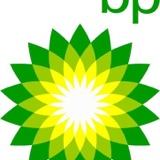Information
-
Document No.
-
Audit Title
-
Client / Site
-
Conducted on
-
Prepared by
-
Location
-
Personnel
Section 1: Occupational Health
-
Is access to the office controlled and does the site have adequate fire/smokes alrams and fire extinguisers?
-
Is chemical hazard data readily available for all substances inspected or used, e.g. Material Safety Data Sheets?
-
Are employees given periodical medical examinations?
-
Is there a qualified first aider on site at all times?
-
Are there regular HSE meetings involving the inspection management and staff?
-
Are there adequate bulletin boards around the company offices for HSE purposes?
-
Are the meetings formalised and documented (i.e. agenda, minutes, etc.)?
-
Is there a system for investigating and following up HSE incidents on inspection sites?
-
Have all inspection scenarios been examined to identify and evaluate all occupational health hazards?
-
Is there evidence that the following types of controls are being applied for identified hazards as appropriate:a) Engineering controls?b) Procedural controls?c) Personal Protective Equipment (PPE)?
-
Are all employees who may be exposed to health risks associated with work, given specific health-related training?
-
Does the inspection office have access to a qualified health professional?
-
Are there general safety rules applied within the inspection area?
Section 2: PPE
-
Does the programme include PPE selection and standards (compliance with company, national or international requirements)?
-
Does the programme include Responsibilities for advising, purchasing, distributing and managing PPE?
-
Does the programme include Procedures for purchasing, issuing, checking, maintaining and managing PPE & PPE training?
-
Are general inspection policies clearly defined in terms of area (PPE zones) and occupational requirements, and are inspection areas and circumstances where personal protective equipment is required adequately assessed?
-
Are PPE rules obeyed by inspectors undertaking cargo inspection?
-
Are employees given proper fitting for personal protective equipment requiring special attention, such as respirators and eye protection?
-
Where breathing apparatus is supplied, is it of the positive pressure type?
-
Is the breathing apparatus in good working condition?
-
Have the inspectors been trained in the use of the breathing apparatus supplied?
-
Have the inspectors been made aware of the dangers of enclosed spaces, static electricity and toxic gases through specific training?
-
Are Nomex/FRC coveralls/uniforms mandatory for each inspector?
-
Are there periodical inspections of PPE?
-
Does the inspection office have any sort of traceability with respect to field equipment proving and maintenance?
-
Is there a Personal Protective Equipment programme ?
Section 3: Facilities and Operation
-
Are the periods of calibration for all measurement equipment comparable with:a) National Standards?b) BP Measurement Standards?
-
Are there records of measuring equipment issued to inspectors, their calibration status and evidence of periodical checks?
-
Are there records of calibration for measurement equipment and records of destruction for non-conforming equipment?
-
Is the system for calibation of measuring equipment effective?
-
Does the measuring equipment used seem to be good condition and stored in a suitable manner between use?
-
Does the office have the all relevant industry standards available to inspectors and is there an effective document control system in place?
Section 4: Certification & Training
-
Has the inspection operation been accredited against an internationally recognised standard?
-
Is there a specific inspection operations and training manual?
-
Have training courses been established to meet the cargo inspectors’ training needs?
-
Have all inspectors had IFIA training & certification?
-
Are inspection training needs reviewed regularly to meet changing customer needs and/or changes to equipment or operational practises?
-
Are sufficient qualified inspectors available to cover the work load?
Section 5: Sample Storage
-
Is there a system for registering samples?
-
Is the period for sample retention in accordance with client instructions?
-
Are fire extinguishers on site and in date?
-
Are samples stored systematically for ease of retreival and disposal?
-
Are samples disposed in accordance with company policy or state regulations?
-
Is the sample storage separate from the main office building?
-
Are the spill containment contingencies adequate for the volumes of stored samples?
-
Is the sample store fitted with explosion proof lighting?
-
Are the stores adequately ventillated and temperature controlled?
-
Are hydrocarbon gas levels monitored or is a system in place to prevent release of hydrocarbon vapours?
-
Has the local fire department been advised of sample store contents?
-
Is the storage robust?
Section 6: Staffing Levels
Section 7: Inspection Equipment
-
Type of level measuring equipment?
-
Type of temperature measurement equipment?
-
Type of Open sampling equipment?
-
Type of Closed/Restricted sampling equipment?
-
Is the inspection equipment in accordance with RIICS?
Section 8: Communications
-
Is communication between the inspection office and clients (direct/indirect, contact personnel) effective and reliable?
-
Is there a formalised route for communicating product quantity and quality issues to the client (both within and out of office hours)?
-
Prior to the start of an inspection event is the inspector given a copy of all relevant instructions for quality and quantity information?
-
Is the inspection report completed and despatched in a timely manner?
-
Does the office complete the input data into the Global Cargo Assurance System (GCAS)?
Section 9: Observations and Comments
-
For BP Cargo Assurance






